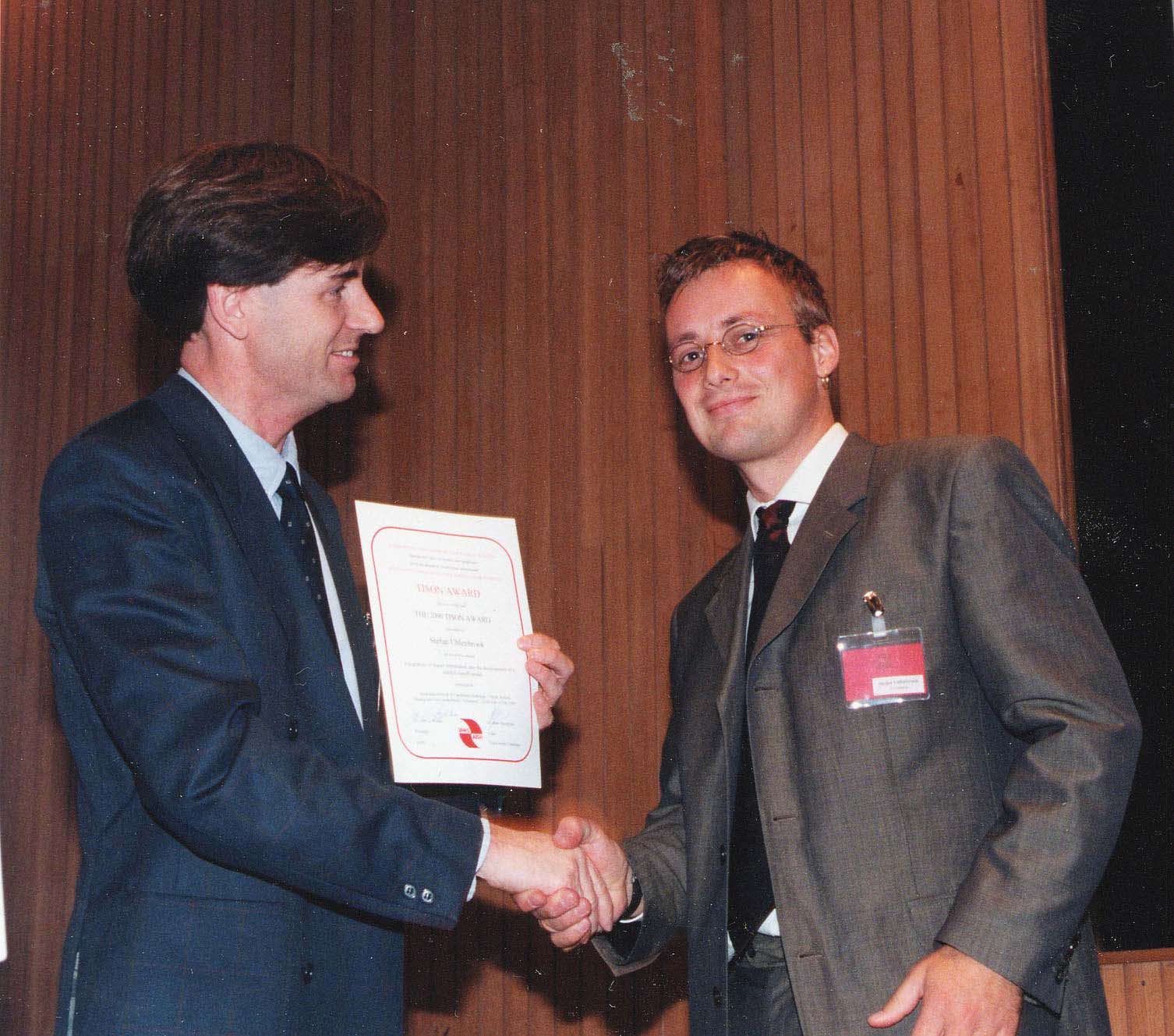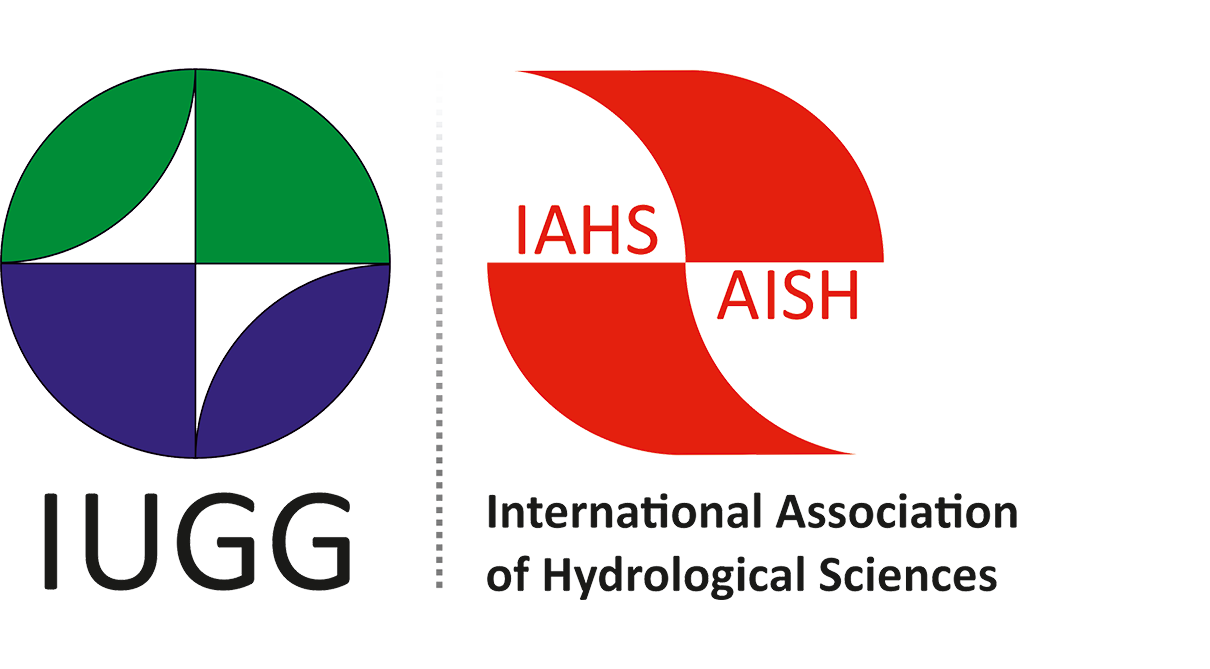Tison Award 2000

Dr S. Uhlenbrook (right) receives the Tison Award from Alain Dassargues |
Dr Stefan Uhlenbrook was chosen as the recipient of the 2000 Tison Award for his paper (co-authored by Chris Leibundgut): "Integration of tracer information into the development of a rainfall–runoff model" published in Integrated Methods in Catchment Hydrology - Tracer, Remote Sensing and New Hydrometric Techniques, IAHS Publ. no. 258, 1999, pages 93-100.
As clearly stated in its title, the paper presents a method aiming to introduce information from tracer investigations into a rainfall–runoff model called TAC (Tracer Aided Catchment Model). Application of the developed model is shown on a small mountainous basin situated in the Black Forest, southern Germany. This model contains an extensive semi-distributed and physically realistic description of runoff generation, using seven unit types, each dominating runoff generation. These processes are conceptualized by different linear and nonlinear reservoir concepts; only the fissured aquifer reservoir was computed in a lumped manner. The way of taking tracer concentrations into account is based on the attribution of concentrations to reservoir outflows on the basis of previous hydrological investigations in the basin. The mean concentration of the reservoir outflows, weighted by the amount of each runoff component gives the simulated tracer concentrations in the total discharge. Results on a test period of 20 months are very convincing in terms of discharge with daily steps and knowing that tracer observations were available weekly. The contribution of fast, delayed and slow runoff components seems remarkably well reproduced when compared to their estimations by measurements of natural tracers (like 18O).
Even if some detailed results concerning the calibration are less convincing and even if more progress needs to be made for describing more physically the fissured aquifer, the general behaviour of the tracer concentrations were reproduced pretty well.
Analysing the results, Dr Uhlenbrook concludes with an explanation of the impact of errors in the discharge simulation, on the simulated concentrations, and particularly when precipitation is held in a snow cover.
This paper and in general the work of Dr Uhlenbrook show very clearly how the results of tracer investigations can be integrated into rainfall–runoff modelling with the aim to obtain always a more physically realistic description of the runoff generation. The approach is promising for future theoretical, numerical and practical developments tending to use more and more tracer results in modelling approaches.
Dr Uhlenbrook has a MSc in hydrology from the University of Freiburg (Germany) and a PhD on "Investigation and modelling of runoff generation processes in a mesoscaled catchment" from the same University under the supervision of Professors Peschke and Leibundgut. He also received the "Carl-Theodor-Kromer Prize" of the Faculty of Geosciences of the University of Freiburg.
The innovative aspects of the research of Dr Uhlenbrook consist mainly in that tracer methods are integrated into the rainfall–runoff modelling. He has demonstrated that tracers are excellent tools for investigating runoff generation processes. Tracer data are used to calibrate and validate hydrological models on multiple response levels and it seems to be a very promising technique.
By giving the 2000 Tison Award to Dr Stefan Uhlenbrook, IAHS offers and shows clearly its support for research in the area of using tracers for building, calibrating and validating hydrological models.
Alain Dassargues (Chairman of the Tison Award Committee for the year 2000 Award)
